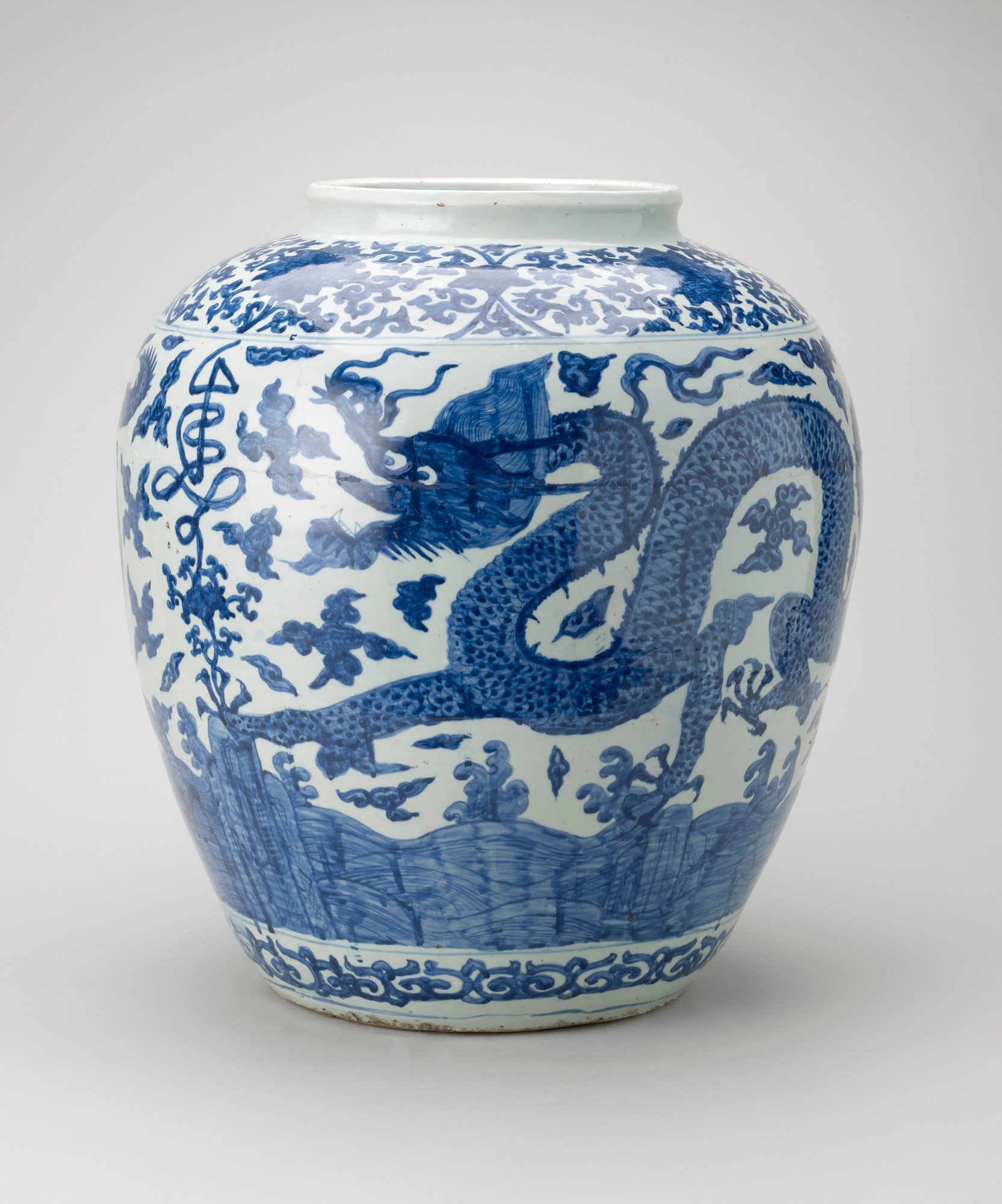
East Meets West
Extraordinary Chinese and Japanese Works of Art in the Royal Collection
Pair of vases
c.1880-1882RCIN 70174
The 1868 Meiji Restoration heralded a new era of Japanese openness to the world after decades of isolation. The ruling shoguns began trading once again with the West and adopted many European customs and institutions. The change enabled the entry of numerous Japanese works of art into the Collection for the first time. In 1867 Queen Victoria's second son, Prince Alfred (1844–1900), embarked on a round-the-world naval tour which reached Japan in 1869. There he acquired a variety of unfamiliar Japanese goods, which went on display in London and Edinburgh on his return from his travels.
Thirteen years later, in 1882, the Meiji Emperor sent Queen Victoria this pair of vases. They are rare examples of Japanese bronzework – a craft not much practised in Japan, where most bronze objects were traditionally small items of personal wear such as sword fittings. However, the decline of the military arts of the samurai class following the Restoration meant that metalworkers began to make elaborately decorated wares like these.







